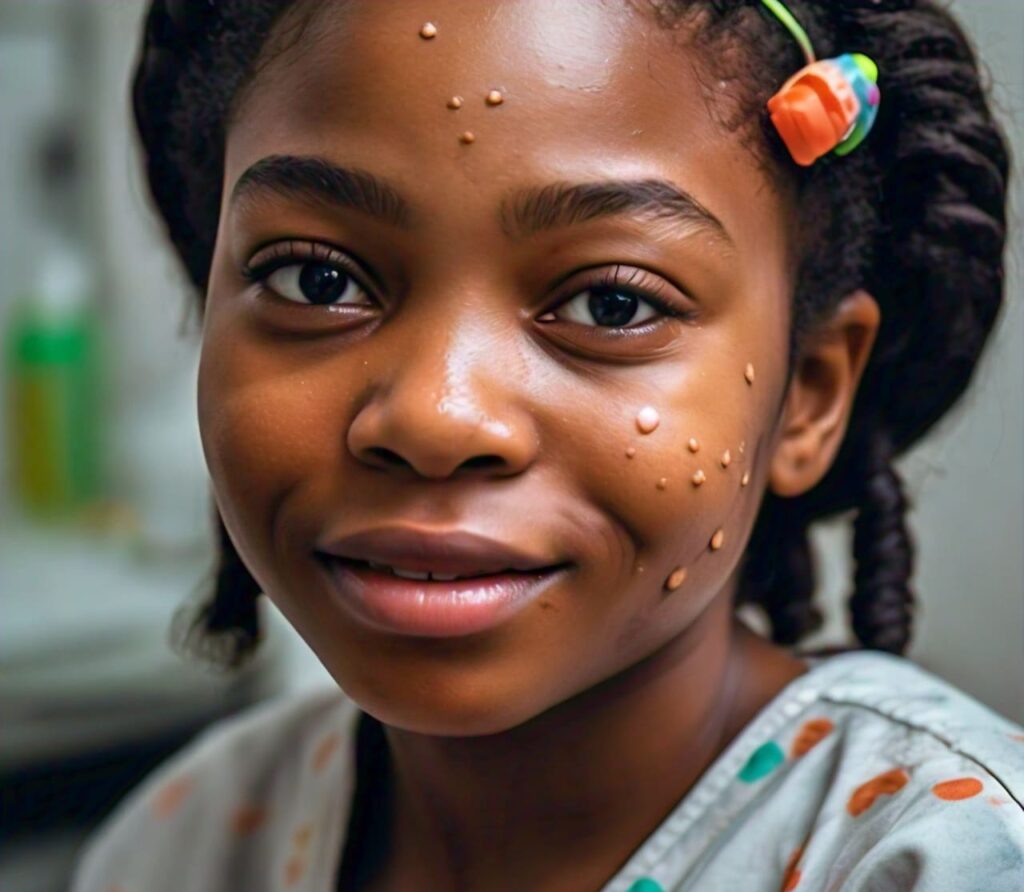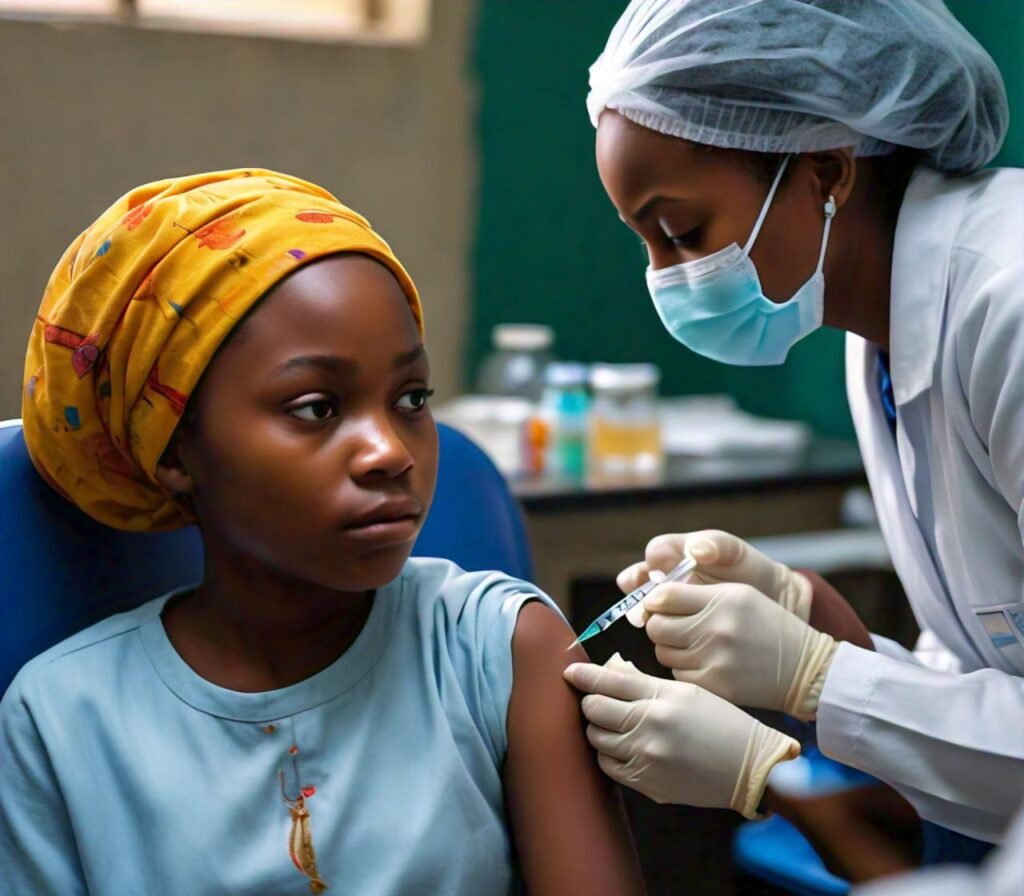
Monkeypox (Mpox) is a rare viral disease that is similar to smallpox but usually less severe. It mainly occurs in central and west African countries. This guide will cover everything you need to know about monkeypox, including how it is diagnosed, treated, and prevented.
Whether you’re looking for basic information or detailed advice, this guide will help you understand monkeypox and how to stay safe.
What is Monkeypox?
Monkeypox (Mpox) is a viral disease caused by the monkeypox virus, a member of the Orthopoxvirus genus. It is similar to smallpox but generally causes milder symptoms. Monkeypox can spread from animals to humans and, less commonly, from human to human.
Who Does Monkeypox Affect?
Prevalence of Monkeypox in Africa
Symptoms of Monkeypox
Symptoms of Mpox usually appear within one to two weeks after exposure and include:
- Fever
- Headache
- Muscle aches
- Backache
- Swollen lymph nodes
- Chills
- Exhaustion
- A rash that starts on the face and spreads to other parts of the body, turning into fluid-filled bumps
Causes of Monkeypox
The disease is caused by the Mpox virus. It can spread through:
- Direct contact with the blood, bodily fluids, or skin lesions of infected animals like rodents and primates.
- Eating undercooked meat of infected animals.
- Close contact with respiratory secretions, skin lesions, or contaminated materials from an infected person.
Risk Factors for Monkeypox
Risk factors include:
- Living in or traveling to areas with reported monkeypox cases, especially in central and west Africa.
- Direct contact with wild animals or their products.
- Close contact with an infected person.
How Your Environment Affects Your Risk of Monkeypox
The kind of place you live can affect how likely you are to get Mpox. Here’s how:
1. Crowded Living Conditions
Living in crowded places, like big cities or overcrowded homes, makes it easier for Mpox to spread. This is because the virus can spread through close contact with an infected person.
2. Poor Sanitation
Areas with poor sanitation can also increase the risk of Mpox. This is because the virus can live on surfaces for a while. If you touch a contaminated surface and then touch your face, you could get sick.
3. Contact with Animals
In some parts of Africa, people have closer contact with animals that can carry the Mpox virus. This can increase the risk of getting the disease.
4. Deforestation
When forests are cut down, animals that might carry the Mpox virus might come into closer contact with people, increasing the risk of spreading the disease.
While these factors can increase your risk, it’s important to remember that anyone can get Mpox, no matter where they live. Good hygiene practices, like washing your hands often and avoiding close contact with people who are sick, can help protect you.
Stages of Monkeypox
Monkeypox goes through several stages from the start of the illness to recovery.
Here’s a simple overview of these stages:
1. Incubation Period
- Duration: About 7 to 14 days after exposure.
- Description: The virus starts to grow in the body, but no symptoms are visible yet.
2. Initial Symptoms
- Duration: 1 to 3 days.
- Symptoms: Fever, headache, muscle aches, backache, swollen lymph nodes, chills, and exhaustion.
3. Rash Development
- Duration: Around 1 to 3 days after the initial symptoms.
- Description: A rash appears, usually starting on the face and then spreading to other parts of the body. The rash goes through several stages:
- Flat spots: The rash starts as flat red spots.
- Raised bumps: The spots turn into small, raised bumps.
- Blisters: The bumps fill with fluid, forming blisters.
- Pustules: The blisters turn into pus-filled bumps.
- Crusting: The pustules form scabs and eventually fall off.
4. Recovery
- Duration: Typically 2 to 4 weeks.
- Description: The rash and other symptoms gradually improve. Most people recover fully, but the illness can leave scars on the skin.
Understanding these stages can help in recognizing monkeypox early and seeking timely medical care.
Negative Impact of Monkeypox on Health
Mpox can make people very sick. In severe cases, it can lead to:
- Pneumonia: Infection can spread to the lungs, causing pneumonia.
- Eye infections: The virus can affect the eyes, potentially leading to vision problems.
- Brain inflammation: In rare cases, Mpox can cause encephalitis, which is inflammation of the brain.
The illness usually lasts for 2 to 4 weeks, with symptoms gradually resolving as the patient recovers.
Other Negative Impact of Monkey Pox on Health and Well-being
Monkeypox can have several other negative effects on health and well-being:
- Physical discomfort due to symptoms like fever, aches, and skin lesions.
- Scarring from the rash, especially if severe.
- Psychological distress from isolation and fear of contagion.
Diagnosis of Monkeypox
Diagnosis involves:
- Clinical evaluation of symptoms.
- Laboratory tests, including polymerase chain reaction (PCR) to detect viral DNA.
- Blood tests to confirm the presence of monkeypox antibodies.
Medical Treatment of Monkeypox
This includes:
- Rest and hydration.
- Medications to manage fever and pain.
- Antibiotics for secondary bacterial infections if they occur.
- Vaccination against smallpox can provide some protection against monkeypox.
Living with a Monkeypox Patient
If you live with someone who has monkeypox:
- Ensure the patient follows their treatment plan.
- Avoid close physical contact and sharing of personal items.
- Practice good hygiene, such as frequent hand washing and disinfecting surfaces.
- Encourage the patient to cover their mouth and nose when coughing or sneezing.
- Provide emotional support and help maintain a comfortable environment for recovery.
How to Protect Yourself from Monkeypox
Mpox can spread easily, but there are things you can do to protect yourself.
Getting the Vaccine
The best way to prevent Mpox is to get the vaccine. It’s especially important for people who might come into close contact with someone who has Mpox. This includes people who:
- Have had close contact with someone with Mpox
- Have had sex with someone who has Mpox
- Have been to places where Mpox is spreading, like sex clubs or parties
Talk to your doctor about getting the vaccine if you think you might be at risk.
Other Ways to Protect Yourself
Besides getting the vaccine, you can also protect yourself by:
- Avoiding close contact with people who are sick
- Washing your hands often with soap and water
- Covering your mouth and nose when you cough or sneeze
- Avoiding touching your eyes, nose, and mouth
- Cleaning and disinfecting surfaces regularly
If you live in an area where Mpox is common, be careful when handling animals and their meat. Make sure to cook meat thoroughly before eating it. By following these tips, you can help protect yourself and others from Mpox.
Conclusion
Understanding monkeypox is crucial for preventing its spread and ensuring the well-being of those affected. By recognizing the symptoms, causes, and risk factors, individuals can take proactive steps to protect themselves and others.
Early diagnosis and supportive care are vital for recovery, and maintaining good hygiene and proper precautions can help manage living with a monkeypox patient.




